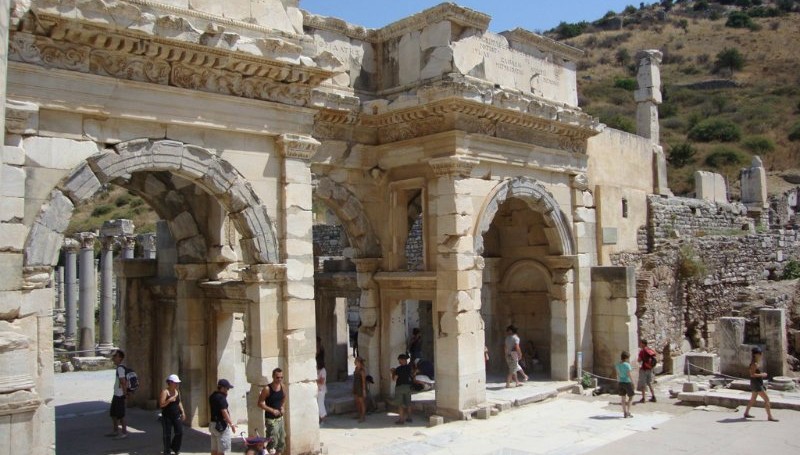Life as a Slave in Ephesus
It was common to own slaves in Greek and Roman times. Slaves were usually from conquered tribes or cities, defeated enemy soldiers captured in battle of unfortunates kidnapped in raids. However people sometimes sold their children, parents or unwanted wives. It was easy to buy or sell a slave in the city market place. There was a thriving commerce in slaves especially between the first century BC and the second century AD.
The slaves for sale were usually half-naked and wore a pendant displaying their origin, age, skills and any shortcoming. The cost of slaves depended on their strength, skills and beauty, among the most valuable were architects, musicians, ceramic decorators and doctors. Slaves might be used in many roles such as child carers, guards, farm workers, miners, craftsmen’s labourers or domestic servants.
Slaves who tried to escape might be punished by branding with a hot iron or they might be set to fight wild animals in the Great Theatre or put to death along with their entire families. Slaves were not allowed to address their masters without permission. In most cities about a quarter of the population would have been slaves. As Roman Ephesus had more than 250,000 inhabitants there would have been about 60,000 slaves. A wealthy family might own 200 or more slaves.
In late Greek and early Roman times, slaves were allowed to practise their own religion and, with their masters’ permission, marry and have children who automatically became the property of the master.
From the sixth century AD slaves acquired more rights as Rome adopted Christianity. They were allowed to join associations and to own property and even land. Some who had given great service to their masters might have been granted their freedom in reward; others might have bought their freedom with their savings. Some freed slaves became wealthy bankers or merchants.

